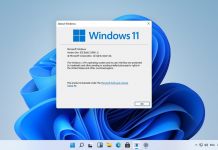At the moment, the only way to avoid ReFS issues is to uninstall the original Patch Tuesday fix (KB5010791) and its out-of-band release KB5009557). [18.01.22 – 16:20 CET] Over the last few days, we have been charting Microsoft’s Windows Server updates from January 2022 Patch Tuesday. From Microsoft issuing the updates last Tuesday to then pulling them from some channels before reinstating them on Friday. Through all that, users are still facing issues on Windows Server caused by the Patch Tuesday updates. In response, Microsoft is issuing an out-of-band update for Windows Server to hopefully end the problems for good. Before we get into that out-of-band release, it is worth checking back over the events of the last week: Tuesday, Jan 12: Microsoft issues January Patch Tuesday with 97 fixes overall, including for Windows Server. Tuesday – Friday: Users start to report problems with Windows Server after installing the Patch Tuesday updates. Specifically, bugs causing domain controllers to reboot, ReFS to go missing, and functionality issues in Hyper-V. Friday, Jan 14: Microsoft seemingly pulls the Windows Server updates from the Patch Tuesday package. However, it emerged the updates remained on the Catalog but were removed from Windows Update. It is unclear if this was an error. Later on Jan 14 – as we reported yesterday – Microsoft reinstated the Windows Server updates and also confirmed it was investigating the problems caused by the update.
Out-of-Band Release
It seems Microsoft’s investigation is complete and the company is now issuing an out-of-band release. This is an update the company launches outside its normal release schedule. Out-of-band updates are rare and usually indicate a problem that needs to be fixed ASAP. While the original updates are available, they now have a warning and Microsoft is pointing users towards the out-of-band update: “Out-of-band update to address issues after installing the January Windows update Microsoft is releasing Out-of-band (OOB) updates today, January 17, 2022, for some versions of Windows. This update addresses issues related to VPN connectivity, Windows Server Domain Controllers restarting, Virtual Machines start failures, and ReFS-formatted removable media failing to mount. All updates are available on the Microsoft Update Catalog, and some are also available on Windows Update as an optional update. Check the release notes for your version of Windows for more information.” Windows 11 is getting KB5010795 to solve problems with VPN connections. Windows 10 21H2 has KB5010793 to address VPN connections and unwanted restarts on Windows Server domains. Windows 10 version 21H1, is receiving KB5010793 with the same solutions On Windows Server 2022, there’s KB5010796 which handles issues with Azure Active Directory, restarting servers, VPN connections, and issues to Resilient File System formats. While the out-of-band updates are rolling out now, it may not be covering all versions of Windows Server. Our readers, including Andrea, confirmed (as of Jan, 18) that there are still issues with KB5009557 for Windows Server 2019 and there is no out-of-band update available yet. We will update accordingly if an out-of-band update is release for KB5009557.
Other Updates
Microsoft still has optional updates for Windows versions on the Windows Update page:
Windows 11, version 21H1 (original release): KB5010795 Windows Server 2022: KB5010796 Windows 10, version 21H2: KB5010793 Windows 10, version 21H1: KB5010793 Windows 10, version 20H2, Windows Server, version 20H2: KB5010793 Windows 10, version 20H1, Windows Server, version 20H1: KB5010793 Windows 10, version 1909, Windows Server, version 1909: KB5010792 Windows 10, version 1607, Windows Server 2016: KB5010790 Windows 10, version 1507: KB5010789 Windows 7 SP1: KB5010798 Windows Server 2008 SP2: KB5010799
On the Microsoft Update Catalog, the following two updates are available:
Windows 8.1, Windows Server 2012 R2: KB5010794 Windows Server 2012: KB5010797
Tip of the day: Windows Power Throttling can net up to 11% more battery savings per charge with little negative impact. In some scenarios you might consider turning Power Throttling off for single apps that you want run with maximum performance. Our tutorial shows you various methods to manage Power Throttling.




